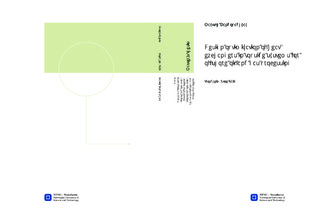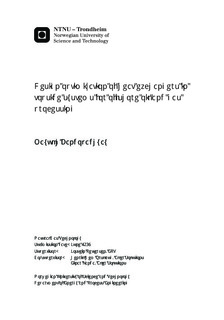| dc.description.abstract | On a typical oil and gas platform, mechanical equipment units are integral parts of the topside processing system. Heat exchangers, separators, scrubbers, compressors and other equipment units are critical for the proper operation of the processing plant. The hydrocarbon stream received at the first production separator is a mixed stream comprising oil, water and gas phase. This mixed stream is processed in order to separate the oil dominated, water dominated and gas phase. The processing systems for hydrocarbon separation consists of individual equipment units which are mapped together to form a network along with all the necessary process and operational parameters like inlet and outlet pressure and temperature, flow rates, compositional data and vapour fraction details. Modifying the process parameters on an individual equipment unit, impacts the process and operational parameters of subsequent downstream equipment units. Changing heat exchanger parameters has visible impacts on the operation of downstream equipments and also on the product specifications. Insufficient cooling of the gas stream reduces compressor efficiency, insufficient heating results in lesser quantities of gas bubbling out in the 3 phase separators and also insufficient cooling causes lesser condensate extraction from scrubber units, upstream of the compressor units. For the varied heating and cooling applications on an oil and gas topside system, shell and tube exchangers, plate frame heat exchangers and printed circuit heat exchangers are the common configurations used in the industry. Shell and tube exchangers have a robust design and can handle most kinds of process fluids across a large pressure and temperature range. Plate frame exchangers are the preferred choice for topside applications compared to shell and tube exchangers considering the cost benefit owing to weight the footprint savings. However, the operating pressure and temperature are a limiting factor for plate frame exchanger applications. Process fluids only within the range of 35 barg and 200oC can be processed in this type of exchanger. Printed circuit heat exchangers are specially designed compact heat exchangers that have a very high heat transfer effective surface area which allows this type of exchanger to handle large heating duty demands. The compact design of printed circuit exchangers gives them a low weight and footprint factor. While doing thermal design calculations for shell and tube heat exchangers, factors like L/D ratio, RhoV2 factor, vibration factor, shell side and tube side fluid velocity, effective surface area per shell, allowable and actual pressure drop values, heat duty and LMTD need to be analyzed in order to achieve an optimum design of the heat exchanger. | nb_NO |

